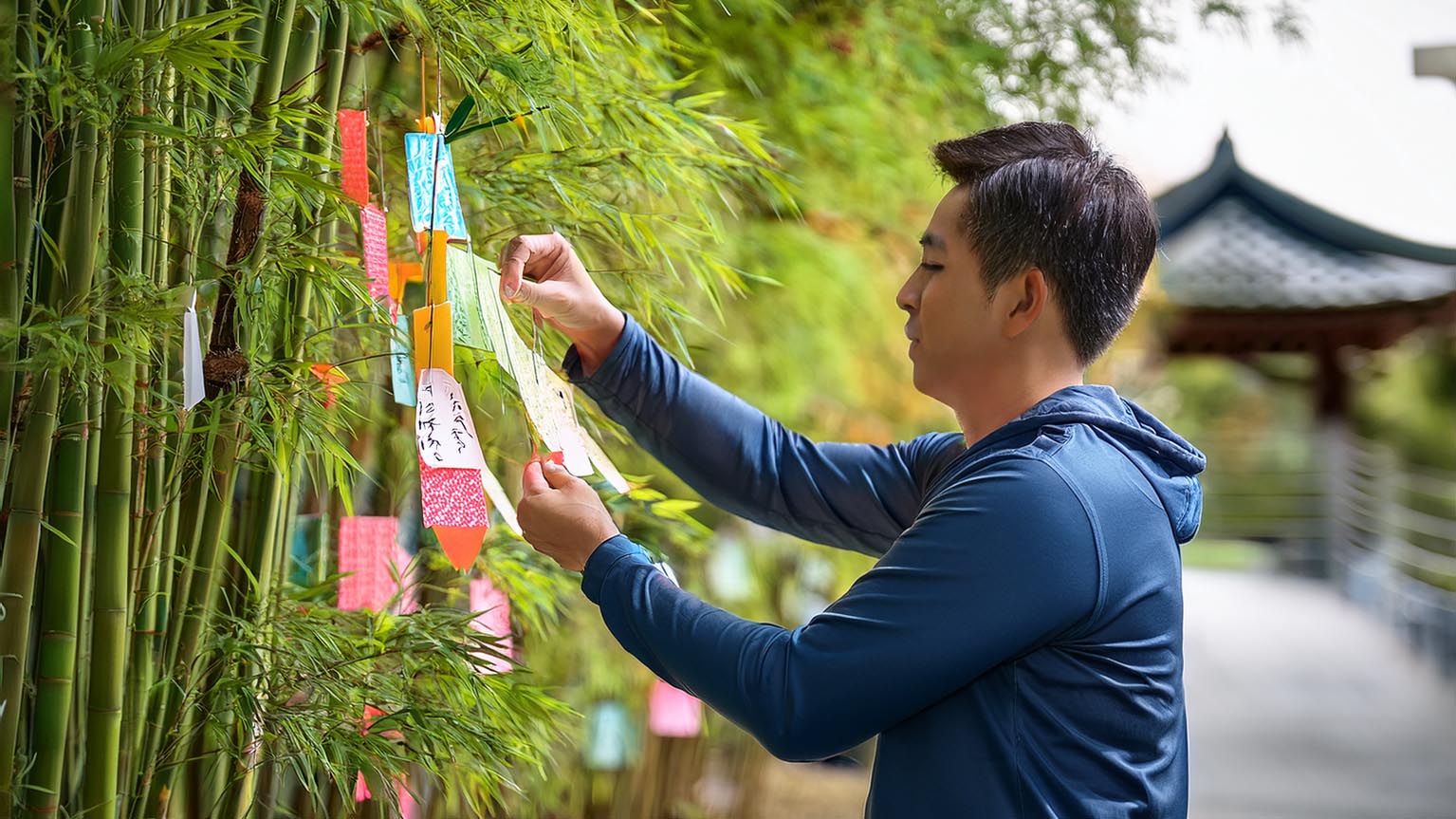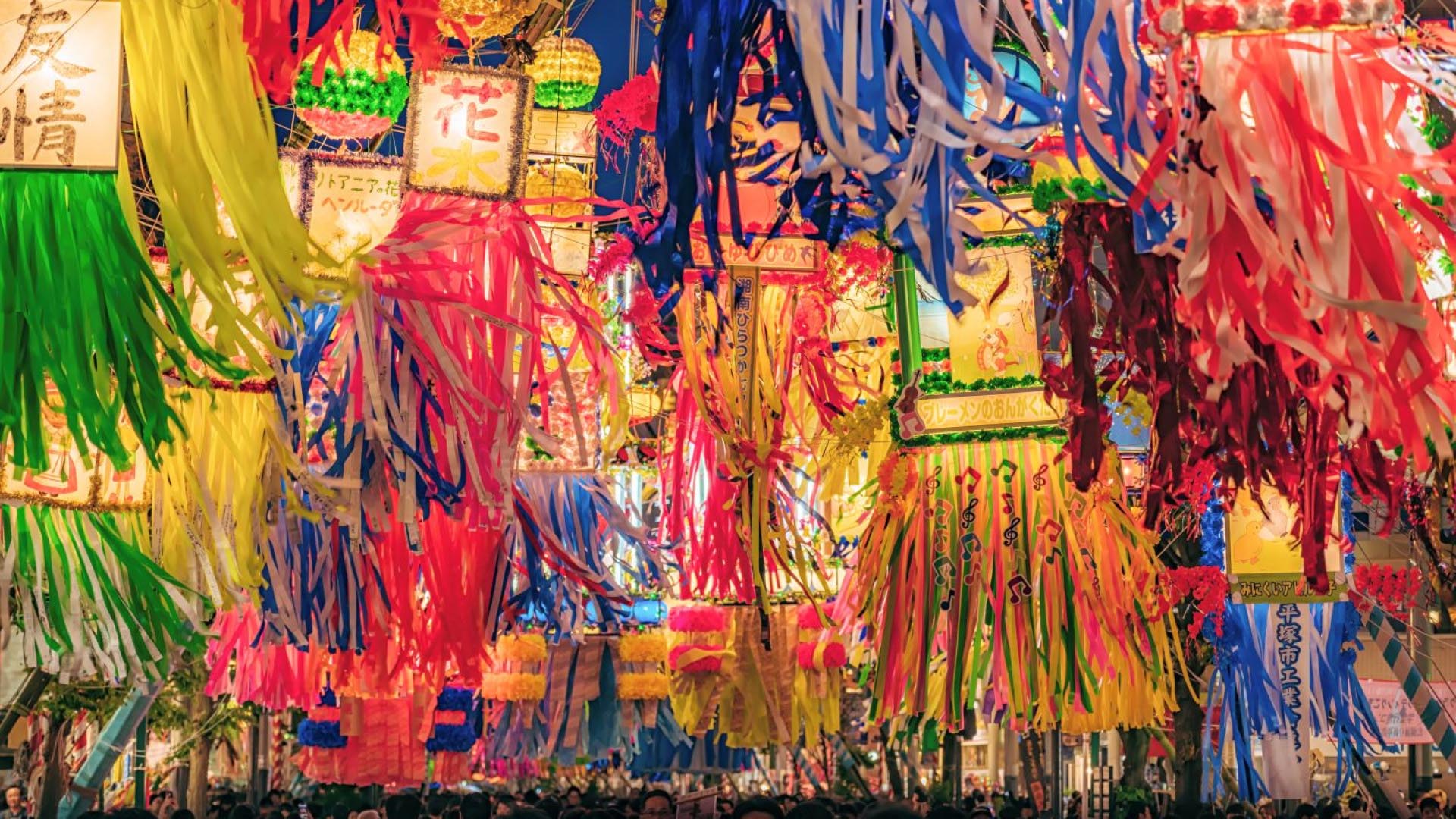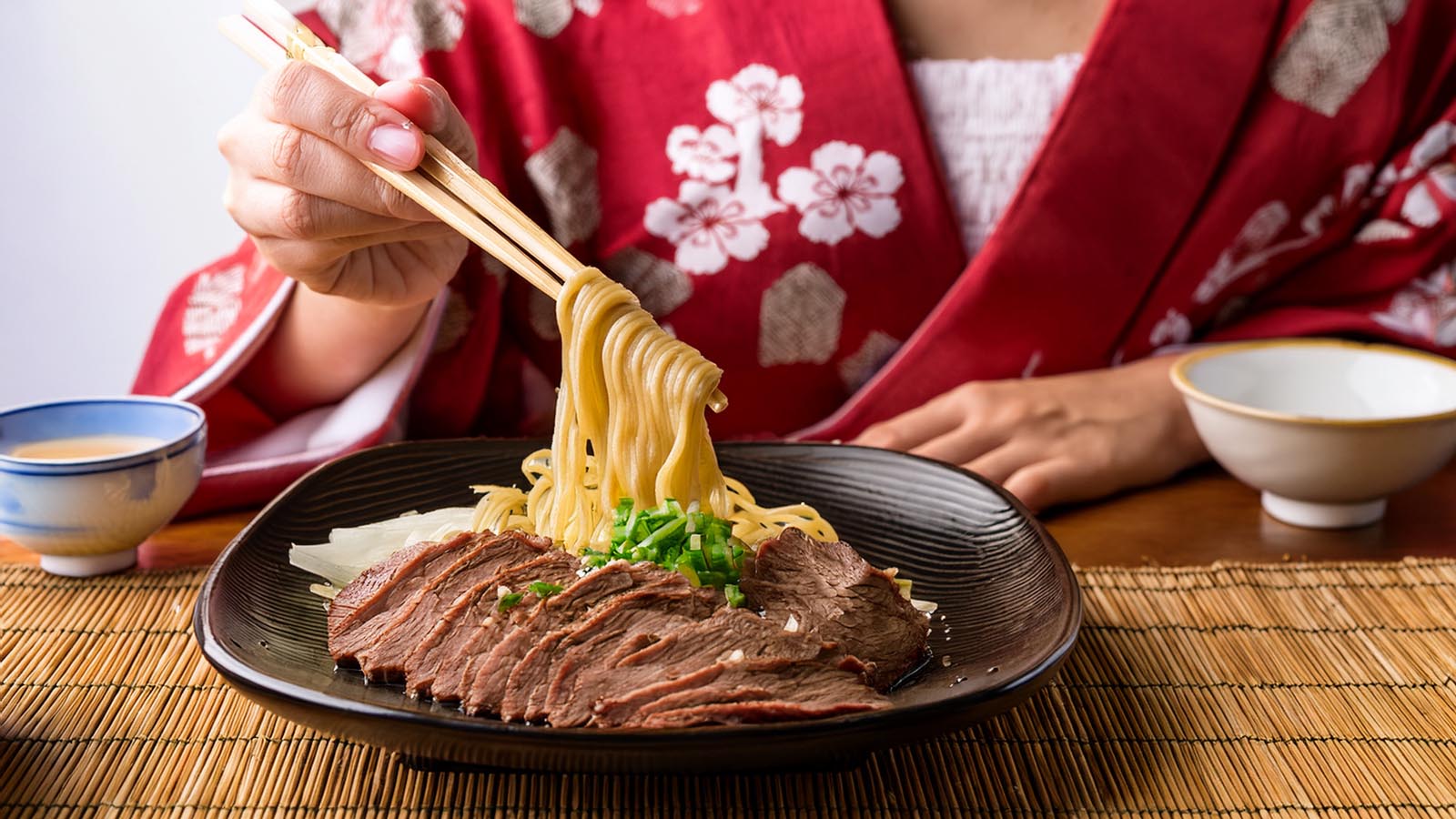Discover the Magic of Japan
TANABATA
Tanabata is celebrated all summer long in Japan
CHOOSE YOUR WISHES COLORFULLY!
Dear guests, dear friends!
Tanabata translates to the Seventh Evening of the Seventh Month and is one of the five Japanese Sekku holidays. I love them all because they welcome us to share meal at our tables. They bring us together. Sekku comes from the word Sekkyo, which means “sharing food”. The dishes prepared for each of these holidays poetically describe the season and also the reason for the celebration. The first is of course Oshougatsu on January 1st, then Ohinasama on March 3rd and Tango no Sekku on May 5th, Tanabata on July 7th and Kiku no Sekku on September 9th, the Chrysanthemum Festival. The beginning of the year is a gorgeous celebration of all the best that life gives us, March is the spring month of the spring newborn beginnings, sowing is done in May, wishes are written in July and harvest is done in September. The chrysanthemum at the end symbolizes longevity. Fruitful and rich. Yes, we want it!
We have already missed this year’s seventh day of July, but we don’t have to wait until next year, because Tanabata is celebrated all summer in Japan. The holiday is also called Hoshi no Sekku, which translates to the Holiday of the Stars and celebrates love, the kind we really wish for, love that is longing, lasting and full of wishes. We don’t know if our wishes will come true, because as we say, it’s in the stars, but having wishes is nice. In the summer, also we in Czech look up to the sky more often than usual, looking for stars and making wishes. We wish for various things, just like the Japanese of today, but they write their wishes on a piece of paper called tanzaku and hang them somewhere, for example on a bamboo tree, most often. One strip of paper next to another and there are a lot of them! Lots of Japanese and lots of wishes! To make it more interesting, the tanzaku have different colors and people choose according to which area their wishes fall into.

White tanzaku is suitable for a wish that expresses some new resolution. Blue strip of paper people choose when they desire peace and want to have better results in what they do. Yellow is a good color for friendship and I believe that yellow tanzaku are the most frequent. However, people today have various wishes that defy classification, which is why you can find hanging papers of various colors and shades. Moreover, the Japanese have no problem customizing things, especially when it comes to wishes and good feelings. For example, black, which was one of the original five colors for a suitable tanzaku, was transformed into purple, because black is depressing. Purple then attracts knowledge, piety and humbleness into their lives. I think we are free to take any paper of any color and any shape, the important thing is to write the wish down or at least invite it into your mind. What is your wish?
But let’s get back to the stars. Hoshi. The celebration of Hoshi no Sekku is about the Milky Way and the stars Vega and Altair. In Japanese culture, there are many legends and fairy tales associated with these stars, and the most impressive and most often read is about Princess Orihime (Vega) and Prince Hikoboshi (Altair). Ori and Hiko. She was the daughter of the Ruler of Heaven and was a spinner, and he was a representative of the male world and his profession was to herd cows. The ruler of the universe put them together and they fell in love at first sight and became husband and wife. But as they were crazily in love, they neglectected their jobs forgotting that she was a spinner and he was a cattle herder, and the world was in trouble. The father got angry and broke their union. He put the Milky Way between them. But as his daughter cried incessantly, he took pity and allowed them to meet once a year, on the 7th of July. Both of them whole year looked forward to that day, but it was not certain they would meet, because there was a river between them. It was impossible to swim across, but birds helped them joining their wings and creating a path for them to walk over. They were magpies. The problem was when it rained, because then the magpies could not create a road. Now, what can we take from this faerytale is that requests and wishes are very important, even though not everything may always be fulfilled.

It is no coincidence that Japanese write their wishes on strips of paper and hung them somewhere. As the pieces of paper flutter in the air people believe that they may connect our world with the world that we cannot reach. No one else actually knows what is written on them. Similarly, when someone thinks about a wish, he or she does not talk about it until it comes true. So I can’t tell you what I wish for now, except that I’m choosing a yellow piece of paper. And since the five Sekku/Sekkyo holidays are always about food, my wish is about food. Ohinasama has diamond-shaped sweets called Hishimochi, Tango no Sekku has the strengthening chimakimochi and kashiwamochi, and what do you think is characteristic for Tanabata? Guess what kind of food brings people together? Yes, these are popular ordinary foods like takoyaki, yakisoba or summer soumen, foods that people eat en masse when there is a big celebration or pilgrimage. In the Czech Republic, it might be hot dogs or fried cheese. The important thing is to be together, have good time, dance and rejoice that it is summer and that it is the holidays and that we can make our wishes come true or at least wish for something nice. In the summer, there are often held fireworks when people look up at the sky and see beautiful ornaments and see lots of colors and it’s all joyful because yes, it’s nice to rejoice for the sake of joy and happiness.
I’ve been looking on internet at pictures from various Tanabata matsuri in Japan, like Asagaya in Suginami, where we as a family lived, and the color that dominated the hanging tanzaku was red. Probably because red is the color for love and energy. It is a driving force. The color of passion and also risk. But all of that has to be there for life to be full flesh life. So don’t choose one color for your wishes. Think colorfully! I advocate for yellow and red, adding white too.
May your Tanabata holiday wishes be bold, illuminated by the sun, and bound by friendship!
Your Miyabi Darja

